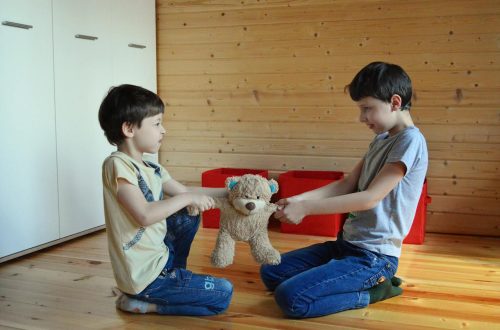
Your Child Will Listen If You Do This: 10 Strategies for Effective Communication

Getting children to listen can sometimes feel like an impossible task. Whether you’re giving instructions, setting rules, or simply trying to have a conversation, it can be frustrating when your words seem to fall on deaf ears. However, effective communication is a skill that can be learned and improved. By adjusting your approach, you can create an environment where your child is more likely to listen and engage. Here are ten strategies to help you achieve just that.
1. Get Down to Their Level
One of the most effective ways to ensure your child is listening is to communicate with them at their level—literally. When you speak to your child from across the room or while standing over them, they may feel overwhelmed or distracted. Instead, kneel down or sit beside them, making eye contact as you speak. This not only grabs their attention but also shows respect, making them more likely to listen and respond.
2. Use Simple and Clear Language
Children, especially younger ones, can easily get lost in long-winded explanations or complex instructions. To improve their listening, keep your language simple and direct. Use short, clear sentences and avoid overwhelming them with too much information at once. For example, instead of saying, “You need to pick up your toys, put on your shoes, and get ready for school,” break it down into steps like, “First, pick up your toys. Then, put on your shoes.”
3. Be Mindful of Your Tone
Your tone of voice plays a significant role in how your message is received. A harsh or impatient tone can cause a child to tune out or become defensive, while a calm and warm tone can make them more receptive. Practice speaking in a way that is firm yet kind, ensuring that your tone matches the message you want to convey. When children feel respected and understood, they are more likely to listen.
4. Give Them Your Full Attention
Children are more likely to listen when they feel that you are fully present with them. This means putting away distractions like your phone, turning off the TV, and giving them your undivided attention. When you are fully engaged, you model the behavior you want to see in them. Additionally, your child will feel more valued and understood, making them more likely to listen and cooperate.

5. Use Positive Reinforcement
Positive reinforcement is a powerful tool in encouraging good listening habits. When your child listens and follows instructions, acknowledge their effort with praise or a reward. Positive reinforcement doesn’t have to be elaborate; simple acknowledgments like, “Thank you for listening so well,” or “I appreciate how you followed directions,” can go a long way. This encourages your child to repeat the behavior in the future.
6. Be Consistent with Expectations
Consistency is key when it comes to getting your child to listen. If your expectations and rules change frequently, your child may become confused or uncertain about what is required of them. Clearly communicate your expectations and stick to them. When children know what to expect, they are more likely to listen and comply. Consistency also builds trust, as your child will understand that your words and actions are reliable.
7. Model Good Listening
Children learn a great deal from observing their parents. If you want your child to be a good listener, it’s important to model that behavior yourself. When your child speaks to you, listen attentively without interrupting. Show that you value their thoughts and feelings by responding thoughtfully and asking questions. By modeling good listening, you teach your child the importance of paying attention and engaging in meaningful conversations.
8. Give Choices Instead of Commands
Children often resist listening when they feel like they have no control over a situation. Giving them choices instead of commands can empower them and make them more willing to cooperate. For example, instead of saying, “Put on your coat now,” try, “Would you like to wear your blue coat or your red coat?” This approach gives your child a sense of agency, making them more likely to listen and follow through with the task.
9. Establish Routines
Routines provide structure and predictability, which can help improve your child’s listening skills. When certain tasks become part of a daily routine, your child knows what to expect and is less likely to resist or ignore instructions. For instance, if bedtime always involves brushing teeth, putting on pajamas, and reading a story, your child will become accustomed to this sequence and be more likely to listen and cooperate without needing constant reminders.
10. Stay Calm and Patient
Patience is essential when trying to get your child to listen. Yelling or losing your temper can create a power struggle and make your child more resistant to listening. Instead, stay calm and composed, even if your child is not responding as quickly as you’d like. If you find yourself getting frustrated, take a deep breath and remind yourself that listening is a skill that takes time to develop. Your calm demeanor will help create a positive environment where your child feels safe and more inclined to listen.
Getting your child to listen is not about exerting control or demanding obedience; it’s about fostering a relationship built on mutual respect and effective communication. By using strategies like getting down to their level, speaking in a calm tone, and offering choices, you can create an environment where your child is more likely to listen and engage. Remember that communication is a two-way street—model the listening behavior you wish to see in your child, and be patient as they learn and grow. With consistency and understanding, you’ll find that your child will not only listen more often but will also feel more connected and valued in the process.




